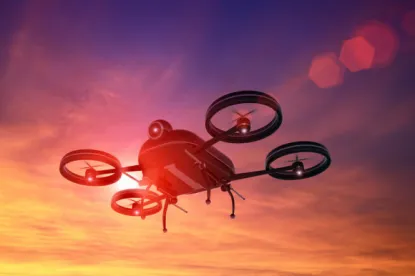As has been reported recently by Defense News, the Trump Administration has launched a formal review of the current policy on U.S. military drone exports, which was rolled out under President Obama in February 2015. U.S. manufacturers are hoping that the Trump Administration may be considering relaxing controls on international sales of military Unmanned Aerial Systems (“UAS”) to key allies and strategic partners around the world. For years, industry has argued that the current controls on military UAS have put U.S. manufacturers at a competitive disadvantage in the global marketplace. See here for further.
By way of background, military UAS as well as related components, systems, software and technical data have historically been controlled under the U.S. State Department’s International Traffic in Arms Regulations (“ITAR” at 22 C.F.R. Parts 1210-130) in U.S. Munitions List Category VIII. The ITAR impose stringent licensing requirements on exports, reexports and temporary imports unless a specific license exemption applies. In particular, certain military UAS are subject to Missile Technology Control Regime (“MTCR”) controls, for example—
-
MTCR Category I UAS includes cruise missile systems, target drones and reconnaissance drones (as well as certain subsystems) capable of delivering at least a 500 kg payload to a range of at least 300 km—prior to February 2015, ITAR license applications for exports of such items were subject to a presumption of denial; and,
-
MTCR Category II covers UAS capable of a range ≥300 kg but that cannot carry a payload of 500 kg or more—prior to February 2015, ITAR license applications for exports of such items were considered on a case-by-case basis; however, if the items in question were intended for the delivery of weapons of mass destruction (“WMD”), then license applications were subject to a presumption of denial.
Commercial and dual-use UAS, on the other hand, are subject to the U.S. Commerce Department’s Export Administration Regulations (“EAR” at 15 C.F.R. Part 730 - 774)—they are not controlled under the ITAR.
As noted above, the current U.S. policy on exports of military UAS was announced under the Obama Administration on February 17, 2015, whereby exports of MTCR Category I UAS (as well as Category II UAS intended for WMD delivery) were for the first time allowed to be authorized on “rare occasions” after the U.S. Government’s assessment of the nonproliferation and export control factors listed in the MTCR Guidelines. In addition, the 2015 policy stipulated that international sales of military UAS were to be made through the Foreign Military Sales (“FMS”) program. Further, approved foreign end-users were required to provide written end-use assurances that:
-
the UAS would be used in accordance with international law, international humanitarian and human rights law, as well as international law on the use of force and self-defense;
-
the UAS would not be used for unlawful surveillance or unlawful force against civilian populations;
-
appropriate training would be provided to UAS operators;
-
the UAS would not be transferred or sold, and related training or other defense services associated with the U.S. military UAS would not be provided, to anyone that was not an officer, employee or agent of the receiving country;
-
the UAS would not be used for purposes other than those for which it was furnished without prior U.S. government approval; and,
-
the U.S. military UAS and related components would be secured and all reasonable efforts would be taken to prevent security lapses.
These end-use assurances were required to be submitted to the U.S. State Department’s Directorate of Defense Trade Controls (“DDTC”) as an addendum to the DSP-83 Non Transfer and Use Certificate.
In launching the newest policy review, the Trump Administration is reportedly focusing on finding a balance among delivering U.S. defense articles to allies and strategic partners, allowing U.S. industry to maintain its edge in UAS technology and development, and preserving America as a leader in promoting international security and nonproliferation. Manufacturers and exporters of military and dual-use drones should carefully monitor these developments not only to ensure their ongoing compliance with U.S. export laws and regulations, but to explore potential new international business opportunities that may come about in the near future.



 />i
/>i

